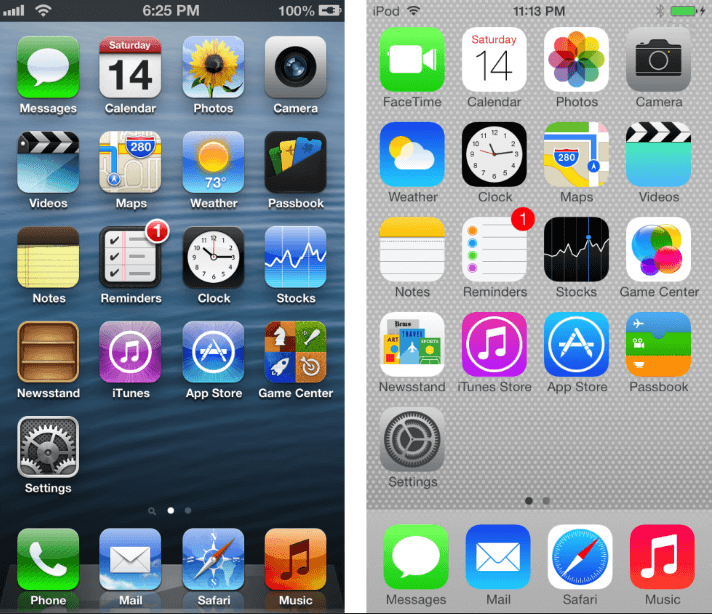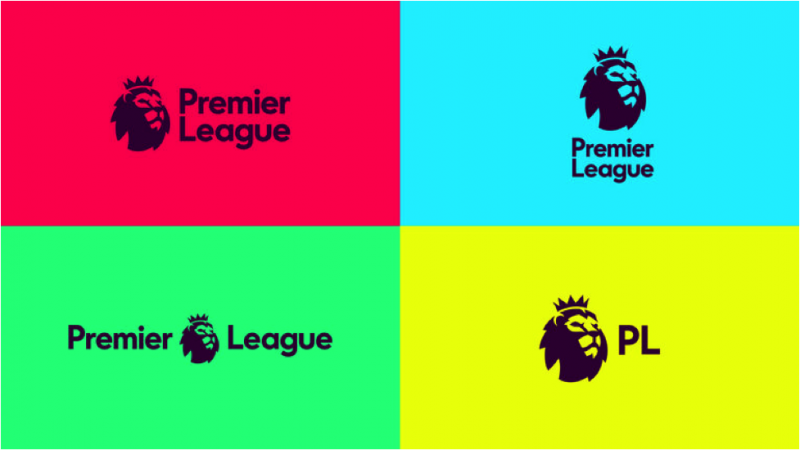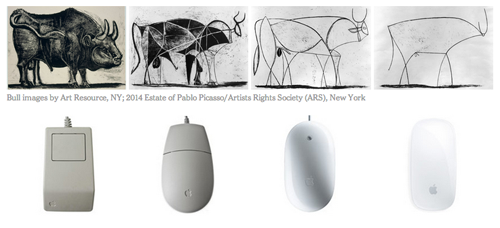shields 徽標
重點 (Top highlight)
Companies invest a lot of time, money and energy trying to make audiences remember their logos and associate higher value with it. The end goal is to make customers pick their brand over another brand.
公司投入了大量的時間,金錢和精力,試圖使觀眾記住自己的徽標,并為其賦予更高的價值。 最終目標是使客戶選擇自己的品牌,而不是其他品牌。
At the beginning of the last decade, a strange trend oddly emerged when it comes to logos redesign: 在過去十年的初期,關于徽標重新設計的奇怪趨勢出現了: many brands replaced their 3D, glossy, and shadowy logo with a simple, flat, minimal one.許多品牌都用一個簡單,平坦,最小的徽標代替了3D,有光澤和陰影的徽標。I tried to find a rationale behind: Why did so many different brands adopt the same exact strategy? Why did they do it only now? I spent time reading many experts articles (UX Designer, Brand Managers, Logo Designers) but also non-experts (Marketers, Redditor).
我試圖找出背后的理由:為什么這么多不同的品牌采用相同的精確策略? 他們為什么只現在才這樣做? 我花了很多時間閱讀許多專家文章( UX設計師,品牌經理,徽標設計師 ),還閱讀了非專家文章( Marketers,Redditor )。
Here are five theories that explains this ‘Flat Design Fashion’:
以下是解釋此“平面設計時尚”的五種理論:
#1 —流行 (#1 — It’s in Vogue)
Everyone is doing it. Let’s follow suit and do it. It feels like the redesign trend happened gradually across the various industries. It also seems like that once one big company redesigned its logo, others follow.
每個人都在做。 讓我們跟著做吧。 感覺重新設計趨勢在各個行業中逐漸發生。 似乎一旦一家大公司重新設計了徽標,其他公司就會緊隨其后。
- Big Tech: Microsoft started in May 2012 then Google in May 2014 and finally Facebook followed in November 2019. 大型科技公司:微軟于2012年5月成立,然后于2014年5月成立Google,最后于2019年11月推出Facebook。
- Financial Services: Visa started in 2014 then HSBC in April 2018. MasterCard followed in January 2019 and lately Revolut on March 2020. 金融服務:Visa于2014年開始,然后于2018年4月進入匯豐。萬事達卡隨后于2019年1月,最近Revolut于2020年3月。
- Automotive: Toyota did is silently in May 2019. VW in September 2019. BMW in March 2020 and Kia has confirmed its logo change this year. 汽車業:豐田汽車在2019年5月默默無聞,在2019年9月是大眾汽車。在2020年3月是寶馬汽車,起亞已經在今年確認了徽標更改。
Who’s next?
誰是下一個?
#2 —“在iOS 7之后”理論 (#2 — ‘After iOS 7’ Theory)

It all started overnight on September 18, 2013, with an iOS update. The App Store updated the apps. The world became flat. Glossy textured UI that seemed beautiful only the day before became obsolete.
所有更新均于2013年9月18日通宵啟動,并進行了iOS更新。 App Store更新了應用程序。 世界變得平坦。 光滑的紋理UI僅在過時的前一天才看起來很漂亮。
Opinions on the iOS redesign were polarized. Many reviews and blogs hated the new design describing it as ‘ugly’ and as ‘a step backwards for Apple’. However, few designers saw in Apple’s work a ‘new beginning’.
關于iOS重新設計的意見分歧。 許多評論和博客都討厭這種新設計,稱其為“丑陋”和“對蘋果而言是倒退”。 但是,很少有設計師在蘋果的作品中看到“新的開始”。
I guess the latter did see it right. Until today and after 6 major updated of iOS, Apple continues using flat logos.
我想后者確實看對了。 直到今天以及iOS的6個主要更新之后,Apple仍然使用平面徽標。
#3 —“千禧一代注意力不集中”理論 (#3 — ‘Millennials have short attention span’ Theory)
Gone are the days when logos used to be filled with unnecessary details. Millennials have the attention of a goldfish. Unlike Generation X and Xennials, in this era, no one has the time to talk and meet. Tinder users swipe more than 1 million per minute. When sitting in front of the TV, we can’t help it but press on the buttons to change the channels.
曾經用不必要的細節填充徽標的日子已經一去不復返了。 千禧一代有金魚的注意。 與X和Xennials一代不同,在這個時代,沒有人有時間交談和見面。 Tinder用戶每分鐘刷卡次數超過100萬次。 坐在電視前時,我們無濟于事,請按一下按鈕更改頻道。
Companies have a glimpse of a second to imprint their logos on the mind of customers. If too complex and if filled with too many details, colors, and text, the logo will just be discarded by our brains.
公司一瞬間就能將其徽標印在客戶的腦海中。 如果過于復雜,并且填充了太多的細節,顏色和文字,徽標將被我們的大腦丟棄。
#4-“設計師需要靈活性”的理論 (#4 — ‘Designers needed flexibility’ Theory)
A company’s logo is considered to be used everywhere: on the company’s website, on a print, flyer, a web banner, or a TV commercial. Therefore, your logo ought to be easily convertible throughout all mediums, if it does not it will not stand the test of the time.
公司徽標被認為在任何地方都可以使用:在公司的網站,印刷品,傳單,網絡橫幅或電視廣告上。 因此,您的徽標應該易于在所有媒體上轉換,否則將無法經受住時間的考驗。

#5 —“少即是多”或“簡化的藝術”理論 (#5 — ‘Less is More’ or ‘The Art of Simplification’ Theory)
Walter Isaacson, formerly Managing Editor of Time magazine, once quoted Steve Jobs: ‘for Steve, less is always more, simpler is always better’. This philosophy has been and is always part the Apple’s DNA. Think of the evolution of the Mac, the iPhone, the iOS, the inception of the Airpods or the revamp of Beats headsets.
前《時代》雜志主編沃爾特·艾薩克森(Walter Isaacson)曾引用史蒂夫·喬布斯(Steve Jobs)的話:“對史蒂夫來說,少即是多,越簡單,總會越好”。 這種理念已經并且一直是蘋果DNA的一部分。 想一想Mac,iPhone,iOS的發展,Airpods的誕生或Beats耳機的改進。

Throughout the 20th century and as environments are getting more complex, there has been a wave of simplification driven by customers asking for simpler products, ideas, or services. Nordic design has boomed in the last 30 years. Google’s favorite job interview question is: ‘How do you simply explain Cloud to your grandma?’. Even babies names have become shorter. This wave applied to logos as well.
在整個20世紀,隨著環境變得越來越復雜,客戶要求更簡單的產品,想法或服務??的推動下,出現了簡化的浪潮。 北歐設計在過去30年蓬勃發展。 Google最喜歡的面試問題是:“您如何簡單地向奶奶解釋Cloud?”。 甚至嬰兒的名字也變短了。 這波浪潮也適用于徽標。
All in all, I think we can agree that Flat Logos have found roots in a mix of changing customer habits, a need for simplification due to complex environments and a required flexibility emerging from new uses of the logos today. Like any other sector, the design world is not steady and the trends will need to change sooner or later. Brands and users can enjoy flat, simple designs for now until a new trend emerge and challenge everything.
總而言之,我認為我們可以同意,平面徽標的根源在于不斷變化的客戶習慣,由于復雜的環境而導致的簡化需求以及當今徽標新用途帶來的靈活性。 像其他任何部門一樣,設計界也并非一帆風順,趨勢遲早需要改變。 品牌和用戶現在可以享受扁平,簡單的設計,直到出現新趨勢并挑戰一切。
If you liked this article, please visit this link to take part of my journey to disrupt the way we read news.
如果您喜歡這篇文章,請訪問此鏈接 ,參與我的旅程,以破壞我們閱讀新聞的方式。
翻譯自: https://uxdesign.cc/flat-logos-everywhere-3e461ef2e1b
shields 徽標
本文來自互聯網用戶投稿,該文觀點僅代表作者本人,不代表本站立場。本站僅提供信息存儲空間服務,不擁有所有權,不承擔相關法律責任。 如若轉載,請注明出處:http://www.pswp.cn/news/274169.shtml 繁體地址,請注明出處:http://hk.pswp.cn/news/274169.shtml 英文地址,請注明出處:http://en.pswp.cn/news/274169.shtml
如若內容造成侵權/違法違規/事實不符,請聯系多彩編程網進行投訴反饋email:809451989@qq.com,一經查實,立即刪除!









)








